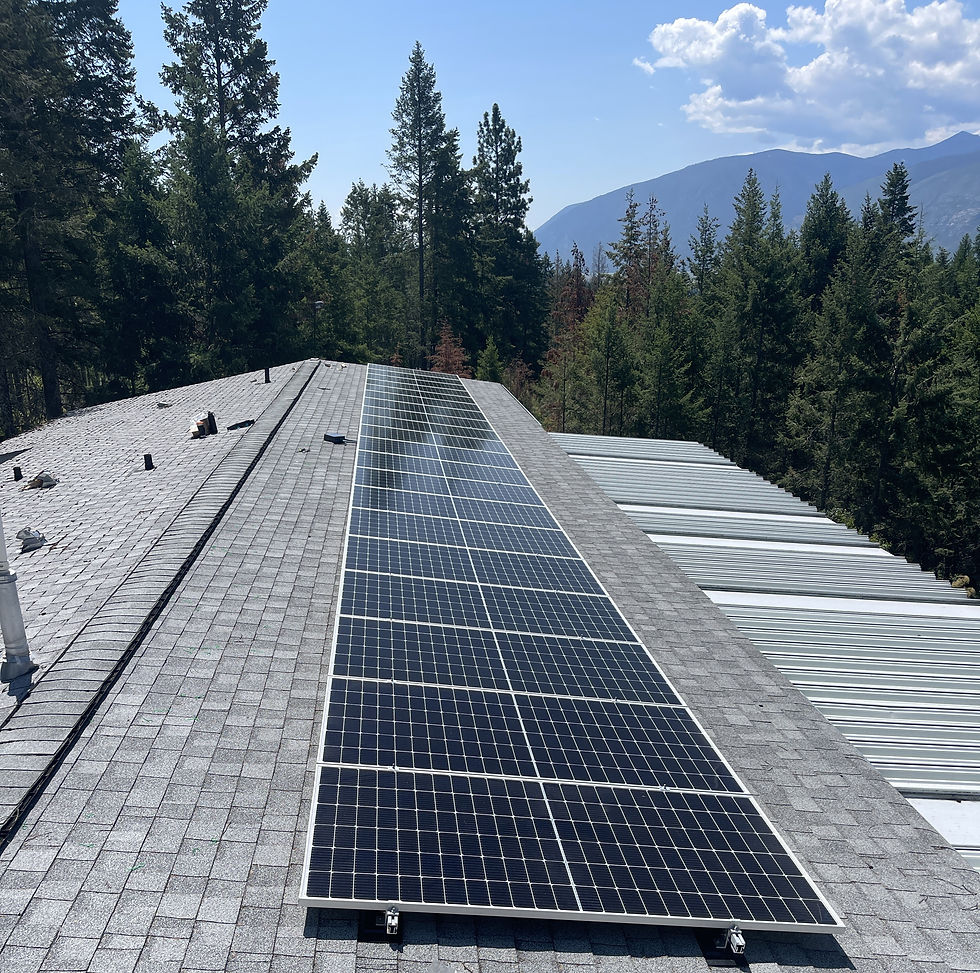The True Cost of Solar: How Much Can You Save with Solar Energy?
- Forrest Demman

- Feb 25
- 2 min read
With longer days and sunnier weather on the way, many homeowners in BC are starting to think about solar energy as a way to cut electricity costs and reduce their environmental impact. But the biggest question people have is:
💡 How much does solar cost, and will it actually save me money?
At Big Tree Electrical, we help homeowners and businesses install solar energy systems that provide long-term savings. Here’s what you need to know about the true cost of solar installations, how much you can save, and when you can expect a return on your investment.
How Much Does It Cost to Install Solar?
The cost of solar depends on system size, roof type, and installation complexity. But in general:
✅ Grid-tied solar systems cost around $3.00 per watt installed.
For an average 7 kW (7,000-watt) residential solar system, that means:
7,000W × $3.00/W = $21,000
💰 Total cost: $21,000 (before incentives and savings)
This price includes:
Solar panels (high-efficiency modules with 25-year warranties).
Racking and mounting for roof or ground-mounted systems.
Microinverters (we typically install Enphase microinverters, which also come with 25-year warranties).
Permitting, design, and installation labor.
The True Cost of Solar: How Much Can You Save?

Your annual energy production depends on your location and roof orientation. Here in the Kootenay region, we have a solar potential of 1,000-1,200 kWh per kWp installed.
Example Savings Calculation
If you install a 7 kW system producing an estimated 8,400 kWh per year (assuming 1,200 kWh/kWp), your potential savings are:
8,400 kWh × $0.13/kWh (FortisBC rate) = $1,092/year in savings
That means over 25 years, you could save:
$1,092 × 25 years = $27,300
✅ Your system could fully pay for itself in 15-20 years, with at least 5-10 more years of free energy production!
Key Considerations Before Installing Solar

1. Your Roof Condition
Is your roof new enough? Solar panels last 25+ years, so you don’t want to replace your roof within 10 years of installation.
If your roof is older, it may be best to replace it first to avoid expensive reinstallation later.
2. Roof Orientation & Shading
South-facing roofs get the most sun, but east and west orientations can also work well.
Trees, chimneys, or nearby buildings can reduce efficiency, so shading analysis is part of our design process.
3. Grid-Tied vs. Off-Grid
This post focuses on grid-tied systems, meaning your solar power feeds into the electrical grid, and you still have power at night or during low-sunlight months. If you’re interested in battery storage and backup power, stay tuned for our upcoming post on solar batteries and how they work with off-grid or hybrid systems!
The Long-Term Benefits of Solar
☀️ Locked-in energy savings: Hedge against rising electricity prices.
🏡 Increase home value: Homes with solar sell faster and at higher prices.
🔋 Energy independence (With grid forming inverters): Generate your own power and reduce reliance on utility companies.
Is Solar Right for You?
The best way to find out if solar is a smart investment for your home or business is to talk to an expert.
📞 Contact Big Tree Electrical today for a free consultation and custom solar estimate!
👉 Request a Quote | Call Us: (250) 977-3477




